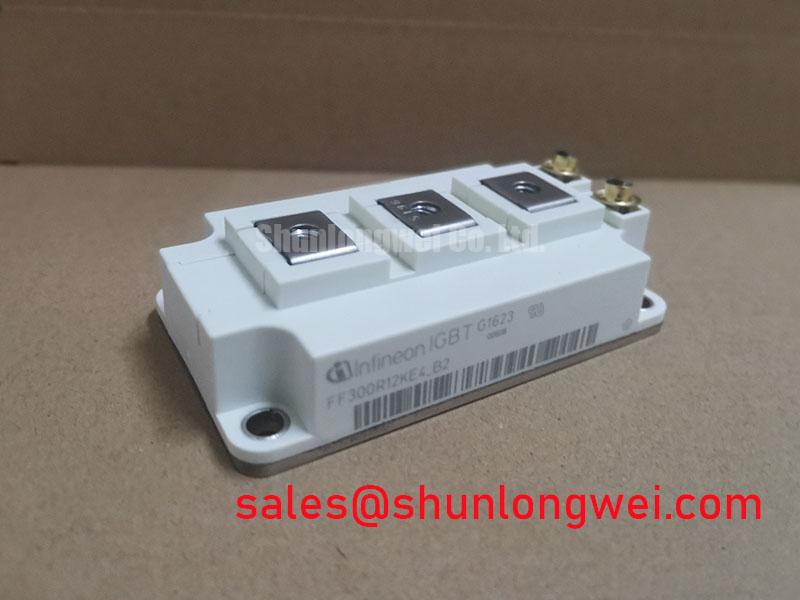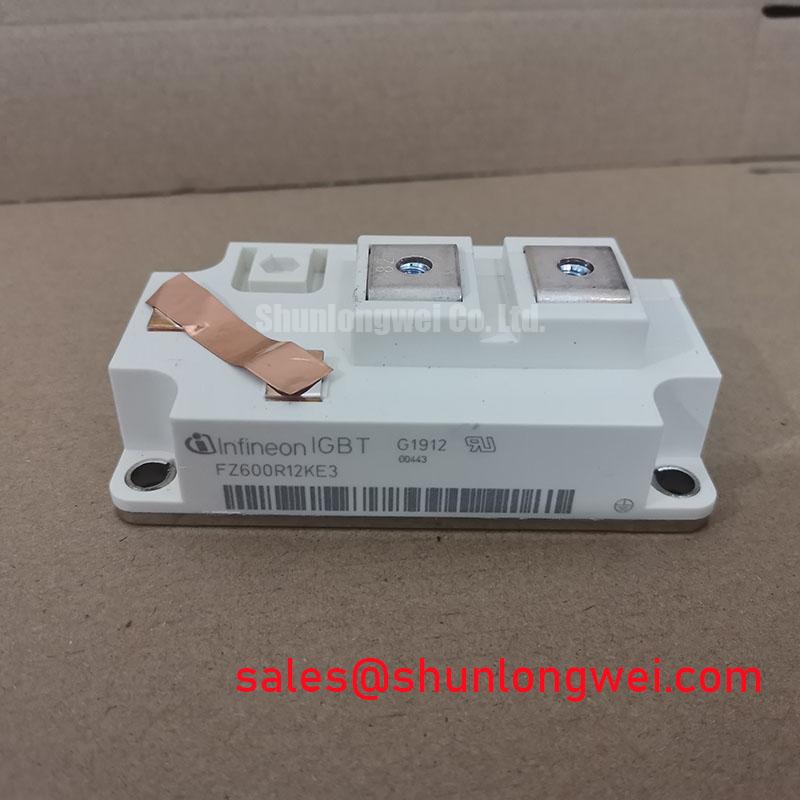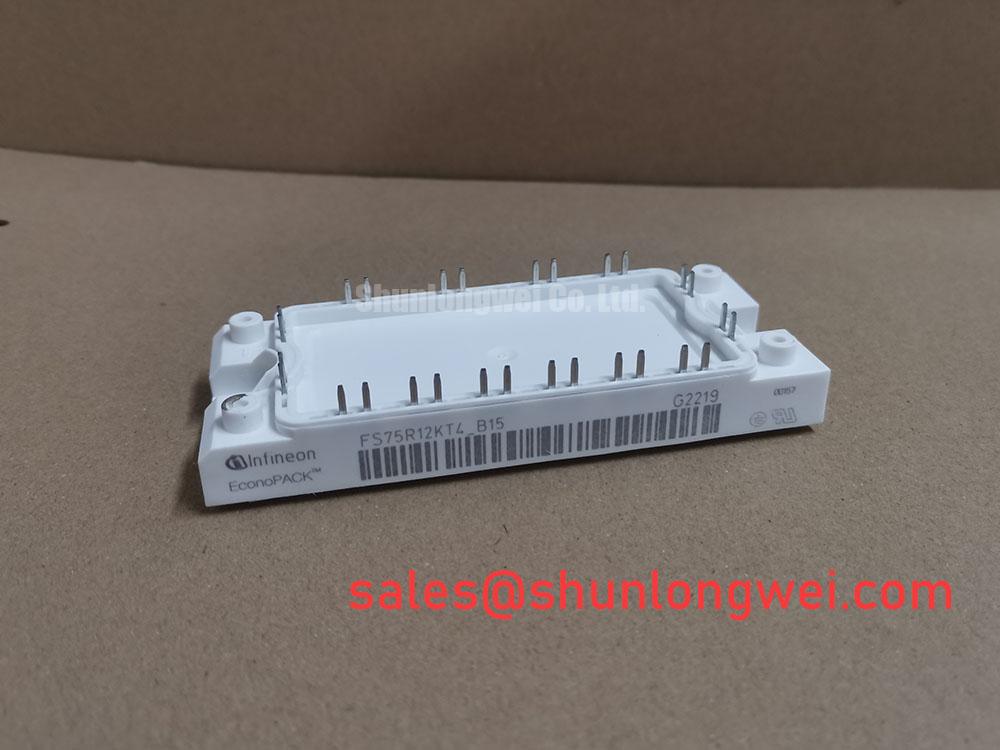Content last revised on October 12, 2025
FF900R12IP4: High-Efficiency 1200V IGBT Module for Demanding Power Conversion Systems
The FF900R12IP4 is a high-power 1200V, 900A IGBT module engineered for superior efficiency and reliability in high-demand power conversion applications. This module integrates Infineon's advanced Trench/Fieldstop IGBT4 and Emitter Controlled 4 diode technology to minimize losses and maximize thermal performance. With key specifications of 1200V | 900A | VCE(sat) of 1.85V (typ.), it delivers robust power handling and exceptional efficiency. Its design focuses on reducing total switching losses and providing a very low collector-emitter saturation voltage, which are critical for high-frequency operation. For engineers developing high-power converters, this module provides a direct path to achieving greater power density and improved system-level efficiency. Engineered for megawatt-class inverters where thermal stability and low conduction losses are paramount, the FF900R12IP4 offers a premier solution.
Application Scenarios & Value
Achieving System-Level Benefits in High-Power Inverters
The FF900R12IP4 is specifically designed for high-power, high-frequency applications where efficiency and reliability are non-negotiable. Its primary application is in wind turbine inverters, where converting variable DC from the generator to grid-quality AC requires robust and efficient power switching. The module's low typical VCE(sat) of 1.85V at its nominal current is a decisive factor, as it directly reduces conduction losses. To put this in perspective, lower conduction losses mean less heat generated for every amp that flows through the device. This reduction in waste heat allows for smaller, more cost-effective heatsink designs and improves the overall reliability of the Solar Inverter system by lowering the operating temperature. Furthermore, its optimized switching characteristics (Eon and Eoff) enable higher switching frequencies, which is crucial for reducing the size and cost of magnetic components within the system.
Other key applications include high-power motor drives, uninterruptible power supplies (UPS), and traction drives. In these systems, the module's high short-circuit capability and wide Safe Operating Area (SOA) provide the necessary robustness to handle demanding load conditions, such as motor startup currents or grid faults. While the FF900R12IP4 is ideal for applications in the 500kW to 1MW range, for systems requiring even higher power output, the related FF1400R12IP4 offers an increased current rating within the same PrimePACK™ family.
Key Parameter Overview
Decoding the Specs for Enhanced Switching Performance
The technical specifications of the FF900R12IP4 are tailored for high-efficiency power conversion. The parameters below highlight the module's capability to minimize losses and withstand rigorous operating conditions, which are critical factors for system designers.
| Parameter | Symbol | Condition | Value | Unit |
|---|---|---|---|---|
| Collector-Emitter Voltage | VCES | Tvj = 25°C | 1200 | V |
| Nominal Collector Current | IC nom | TC = 100°C | 900 | A |
| Collector-Emitter Saturation Voltage | VCE sat | IC = 900 A, VGE = 15 V, Tvj = 25°C | 1.85 (typ.) | V |
| Gate-Emitter Threshold Voltage | VGE(th) | IC = 36.0 mA, VCE = VGE, Tvj = 25°C | 5.8 (5.2-6.4) | V |
| Switching-on energy | Eon | IC = 900 A, VCE = 600 V, Tvj = 150°C | 170 (typ.) | mJ |
| Switching-off energy | Eoff | IC = 900 A, VCE = 600 V, Tvj = 150°C | 235 (typ.) | mJ |
| Thermal Resistance, Junction to Case | RthJC | per IGBT | 0.021 | K/W |
| Max. Junction Temperature | Tvj max | 175 | °C |
Download the FF900R12IP4 datasheet for detailed specifications and performance curves.
Frequently Asked Questions (FAQ)
What is the primary benefit of the Trench/Fieldstop IGBT4 technology used in the FF900R12IP4?
The Trench/Fieldstop IGBT4 technology provides an excellent trade-off between conduction losses (low VCE(sat)) and switching losses. For a design engineer, this means achieving higher overall inverter efficiency compared to older IGBT generations, reducing both cooling requirements and operational costs.
How does the positive temperature coefficient of VCE(sat) benefit paralleling operations?
The positive temperature coefficient means that as an individual IGBT chip heats up, its on-state resistance increases slightly. This characteristic naturally forces current to share more evenly among parallel-connected modules. This self-balancing effect simplifies the design of high-current inverter legs by preventing thermal runaway in any single device, thereby enhancing system reliability.
What does the maximum junction temperature (Tvj max) of 175°C imply for system design?
A high Tvj max of 175°C provides a greater thermal margin for the design. This allows the module to operate safely under higher load conditions or in environments with higher ambient temperatures. It gives engineers more flexibility in thermal management design and can contribute to a higher power density for the overall converter.
Technical Deep Dive
A Closer Look at the IGBT4 and Emitter Controlled Diode Combination
The core of the FF900R12IP4's performance lies in the synergy between its Trench/Fieldstop IGBT4 and the Emitter Controlled 4 freewheeling diode. The IGBT4 design is optimized for a low VCE(sat), which acts like a smaller tollbooth for current—the lower the voltage drop, the less energy is wasted as heat when the switch is on. This is crucial for high-current applications, as power loss is a product of this voltage and the current flowing through it. Concurrently, the Emitter Controlled 4 diode is engineered for soft recovery characteristics. This "softness" is akin to a car's suspension smoothing out a bumpy road; it reduces voltage overshoots and oscillations during the diode's turn-off phase. This behavior is critical in reducing electromagnetic interference (EMI) and minimizing stress on the IGBT during turn-on, contributing to the module's overall robustness and simplifying the design of Snubber Circuit networks.
Strategic Considerations for System Design
Integrating the FF900R12IP4 into a power system is a strategic decision that favors long-term efficiency and reliability. The module's low total power losses enable designs that can meet stringent energy efficiency standards, such as those for utility-scale renewable energy systems. The robust mechanical design of the PrimePACK™ housing, coupled with the high thermal cycling capability, ensures a long operational life even in applications with fluctuating load profiles, like motor drives or traction inverters. For engineering teams, selecting this module means investing in a component that reduces not only the immediate bill of materials through smaller cooling systems but also the total cost of ownership through higher efficiency and enhanced durability.
















